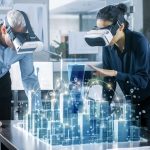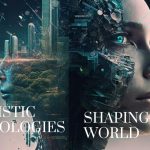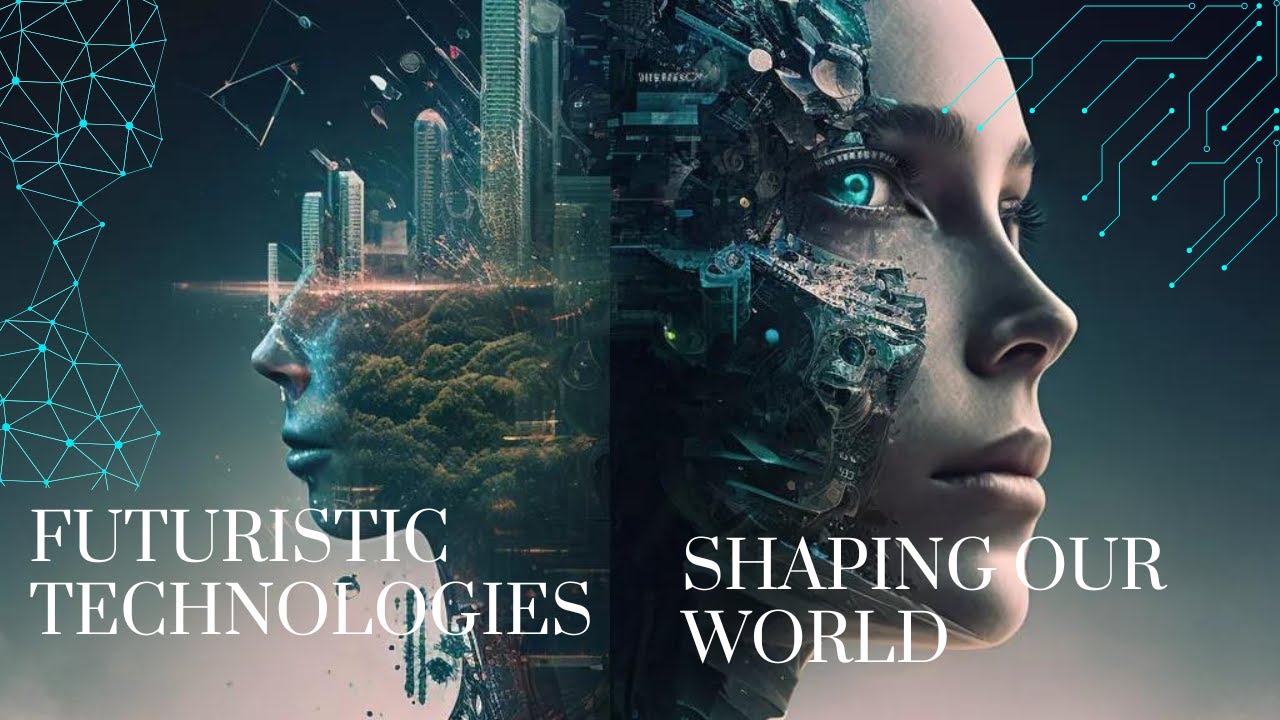In every era of human history, progress has been measured by the tools we create. From the first stone tools to the modern age of artificial intelligence, technology has always been an extension of human imagination and ambition. Today, we live in an unprecedented age where our capacity to innovate is outpacing the limits we once believed were fixed. Technology is no longer just a set of tools—it is becoming the very framework through which human potential is redefined.
This journey of being “wired for progress” isn’t merely about faster machines or smarter algorithms; it’s about how humanity itself evolves in response to these breakthroughs. Technology is shaping our identities, altering how we live and work, and expanding what it means to be human in ways that were once the stuff of science fiction.
The Evolution of Human Potential
Human potential has always been linked to survival and progress. Early humans relied on fire, wheel, and agriculture to ensure continuity. The industrial revolution redefined potential through machinery, energy, and global trade. But in the digital age, potential isn’t defined by physical capacity—it’s tied to knowledge, connectivity, and creativity.
Technology is no longer simply assisting us in performing tasks more efficiently. It is actively reshaping what humans are capable of achieving. Whether through artificial intelligence augmenting our cognitive abilities, biotechnology extending our lifespans, or space exploration expanding our horizons, human potential has entered a stage where limits are constantly being redrawn.
Redefining the Mind: Cognitive Enhancement
One of the most profound ways technology redefines potential lies in how it enhances human intelligence. Consider how the internet transformed memory and learning. Where once we relied on books and libraries, today vast knowledge is only a click away.
Artificial intelligence is now taking this further. Tools like language models, real-time translation, and personalized education systems amplify how we think, learn, and create. Instead of memorizing vast amounts of information, our potential now lies in our ability to interpret, question, and innovate with what technology provides.
This shift raises a critical point: human intelligence is no longer bound by the brain’s biology alone. With neural interfaces, brain-computer connections, and AI-driven learning platforms, we are building a future where the boundaries of knowledge acquisition and problem-solving may become nearly limitless.
Redefining the Body: Biotechnology and Longevity
If the digital age reshapes the mind, biotechnology redefines the body. Advances in genetic engineering, precision medicine, and regenerative therapies are extending human lifespans and improving the quality of life.
For example, CRISPR technology allows scientists to edit genes with precision, potentially eliminating hereditary diseases. Prosthetics, once basic extensions, now integrate robotics and AI, giving individuals superhuman capabilities. Wearable technology doesn’t just track health but predicts illnesses before they manifest.
This progress reframes potential in ways beyond mere survival. It positions humanity to ask bold questions: Could technology eliminate aging? Could we become resilient against pandemics? Could enhancements move us beyond the biological limitations we’ve carried for millennia?
Redefining Society: Connectivity and Collaboration
No single human can achieve monumental progress alone. Technology’s most transformative power lies in its ability to connect people and foster collective intelligence.
The internet, mobile devices, and social platforms have created a global network where ideas spread in seconds. Collaboration no longer requires physical proximity; diverse teams spanning continents can design, test, and launch projects seamlessly. Open-source communities have already shown how collective progress can outpace traditional institutions.
But connectivity doesn’t just expand collaboration—it redefines belonging. Global communities form around shared causes, whether climate action, digital rights, or scientific exploration. This creates a new kind of human potential: the capacity to drive change on a planetary scale through united digital movements.
Redefining Work: Automation and Creativity
Work has always been central to human identity. But automation, robotics, and AI are transforming the nature of labor in ways that challenge traditional ideas of productivity.
Machines excel at repetition and efficiency. They take over tasks in factories, offices, and even customer service. This shift, often seen as a threat, actually redefines human potential by pushing us toward roles that demand creativity, empathy, and critical thinking—qualities that machines cannot fully replicate.
The gig economy, remote work, and digital entrepreneurship are evidence of how technology reshapes opportunities. People can now monetize skills, create businesses, and reach markets worldwide from their laptops. Work is no longer confined to office walls or 9-to-5 structures; it has become flexible, borderless, and deeply personalized.
This transformation forces us to ask: if machines handle routine work, what becomes of human identity? The answer may lie in the realization that progress frees us to pursue innovation, art, and purpose-driven endeavors at levels once unimaginable.
Redefining Exploration: Beyond Earth
Human potential has always been tied to exploration—crossing oceans, climbing mountains, and mapping unknown lands. Today, technology is pushing that impulse beyond Earth itself.
Space technology, from reusable rockets to lunar bases and Mars missions, signals a future where human potential is no longer confined to this planet. The ambition to become a multi-planetary species redefines survival, knowledge, and destiny.
Moreover, space exploration challenges us to reimagine cooperation, since no single nation or company can achieve interplanetary colonization alone. This endeavor may represent humanity’s greatest collective project, pushing our potential to the outer limits of imagination.
Ethical Crossroads: The Responsibility of Progress
Yet, with every breakthrough comes responsibility. Technology amplifies human potential, but it also magnifies risks. Artificial intelligence can be a tool of empowerment or manipulation. Biotechnology can cure diseases or raise ethical dilemmas around genetic engineering. Connectivity can unite, but also divide through misinformation.
The real question is not whether we are wired for progress—it is how we choose to direct it. Ethical frameworks, inclusive policies, and global cooperation are essential to ensure that technology expands potential without undermining human values.
Progress must be balanced with responsibility. Human potential isn’t just about capability—it’s about purpose. Without guiding principles, progress risks becoming exploitation rather than empowerment.
The Human-Tech Synergy: A New Identity
Ultimately, technology doesn’t replace humanity; it co-evolves with it. The most transformative idea of our time is not about machines surpassing humans but about humans evolving alongside machines.
We are entering a stage where identity itself is shaped by this partnership. A student today is not just a learner—they are an augmented thinker with access to AI tutors. A doctor is not just a healer—they are empowered by data-driven insights and robotic assistance. An artist is not only an individual creator—they can collaborate with algorithms to produce new art forms.
The synergy between human imagination and technological capacity creates a hybrid potential—something neither could achieve alone. This is where the true definition of “wired for progress” lies: not in machines outpacing humans, but in humans and machines building a future together.
Looking Ahead: The Next Frontier
As we stand at this crossroads, it’s clear that the story of progress is still unfolding. Tomorrow’s technologies—quantum computing, brain-machine symbiosis, sustainable energy breakthroughs—promise to redefine potential even further.
But progress isn’t inevitable. It requires vision, courage, and responsibility. The real measure of human potential is not in the tools we create, but in how we use them to build a more inclusive, sustainable, and meaningful future.
We are wired for progress, but it is up to us to decide the direction of that wiring. Will it lead to greater empowerment and harmony, or will it deepen divides and risks? The answer depends not only on engineers, scientists, or policymakers but on all of us—as a collective species that must choose how to define itself in this new era.
Conclusion
Technology has always been a mirror of human potential, reflecting our ambitions, fears, and dreams. Today, that mirror shows us not just what we are, but what we could become. From enhancing minds and bodies to reshaping societies and exploring new worlds, technology redefines every boundary we once believed to be fixed.
To be “wired for progress” is to embrace this transformation, not as passive observers but as active participants shaping the trajectory of humanity. Our potential is no longer limited by biology, geography, or tradition—it is defined by imagination, collaboration, and responsibility.
We are not just users of technology. We are partners in progress, architects of possibility, and pioneers of a future where human potential is as boundless as our creativity.







